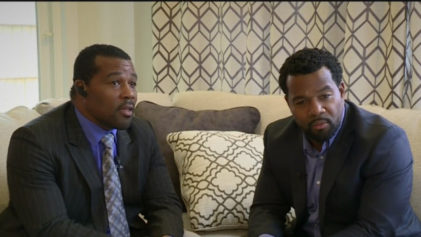At a time when the nation’s attention is focused on police brutality like a laser, New York City residents over the last several years have substantially increased the number of complaints they filed against city police for alleged wrongdoing.
While this has undoubtedly caused significant mental anguish for city residents, it has also cost taxpayers serious money—the 150 percent increase in complaints between 2006 and 2012 cost the city over $315 million in claims that were settled or in payouts when cases went to trial, according to the annual report by the city comptroller.
Charts in the comptroller’s report show the steady incline each year in the claims filed against the NYPD, indicating that there is some underlying increase in the amount of force police officers are using against city residents. These revelations come at a time when city police are under intense scrutiny because of the death of Eric Garner, who was killed at the hands of NYPD officer Daniel Pantaleo. After Pantaleo wasn’t indicted by a grand jury—so soon after a St. Louis grand jury failed to indict officer Darren Wilson in Michael Brown’s death—the decision has sparked nationwide protests that are still going on.
Joel Berger, a civil rights attorney who was a senior litigator with the city’s Law Department from 1988 to 1996, told Al Jazeera America that although claims are not always proof of wrongdoing, the numbers show that something is clearly going on with the way the NYPD interacts with city residents.
“Typically in a police misconduct case, once a lawyer decides to file it, that means the lawyer has investigated it and has come to the conclusion that it’s sufficiently meritorious to spend time and resources on,” Berger said. “The important thing is that the number of complaints skyrocketed over a five-year period. When you have that large an increase, it’s got to tell you something.”
“For those of us who work in civil rights litigation, we saw the volume of our work was going up and the majority of them were low-level cases that don’t attract media attention,” Berger continued. “They weren’t people being beaten to a pulp or railroaded into false confessions — it was people being arrested because a cop didn’t like their attitude and wanted to run them through the system even though they knew the case would get thrown out.”
Those are the kinds of encounters that make Blacks and Hispanics in the city feel like the police have some sort of racist agenda.
In fact, a study released in October by the city’s John Jay College for Criminal Justice found that police in New York City over the last three decades have been disproportionately focused on handing out tickets to young Black and Hispanic men as the police force has drastically increased its enforcement of petty, quality-of-life crimes like turnstile-jumping, dancing in the subway and marijuana possession.
While the city’s violent crime rate has declined significantly over that time period, the numbers reveal how the actions of the police in the nation’s most populous city have negatively affected the lives of people of color, in the process serving to further sour the relationship between the cops and Black and Hispanic communities.
Researchers from the city’s John Jay College for Criminal Justice conducted a study looking at the arrests for misdemeanors since 1980, discovering that the percentage of New Yorkers arrested for misdemeanors has tripled over that time. But the brunt of those arrests has not been borne equally across the city population.
The number of Blacks arrested for misdemeanors nearly doubled to 104,659 in 2013, from 56,152 in 1990. The numbers rose even more dramatically for Hispanics, from 30,885 in 1990 to 78,733 in 2013. During the same period, 28,996 whites were arrested for misdemeanors in 2013, compared to 21,815 in 1990.
The authors of the report, Jeremy Travis, president of John Jay College for Criminal Justice, and Preeti Chauhan, a professor of psychology, also analyzed data from Buffalo, Rochester and other urban centers in New York state and found similar patterns in those cities.
“The findings highlight what we see as the stark racial biases that are endemic to police practices in New York City,” Robert Gangi, director of the Police Reform Organizing Project, an advocacy group aimed at exposing unjust police practices, told the Huffington Post when the report came out.
Year after year, the comptroller has been practically begging the city to do something to corral the over-aggressive NYPD.
“We reiterate that the City must carefully examine the trend of more claims being filed against the NYPD,” the comptroller, John Liu, wrote in his last report. “Although there is no easy way to reverse the trend, clearly more must be done.”
One of the comptroller’s recommendations has been to establish a task force to look at the areas that are producing the most claims and create an action plan to reduce them.
In 2006, the number of claims filed against the city because of police action was 2,221. By 2012, the number has risen to 5,601—an enormous increase over such a short time period.
The dollar figure the city paid out on the claims went from $25 million in 2006 to $64 million in 2012. So clearly this increasing aggression on the part of the NYPD has consequences for every resident of the city who pays taxes.
“There’s a huge backlog of cases in the city’s law department and I still get cases of police overstepping their bounds,” Berger told Al Jazeera America. “In 2014, narcotics cops in Brooklyn jumped a perfectly innocent woman and claimed she was doing a narcotic transaction. They discovered no transaction had taken place but they didn’t like the woman’s attitude and arrested her for disorderly conduct. You see this stuff all the time.”


